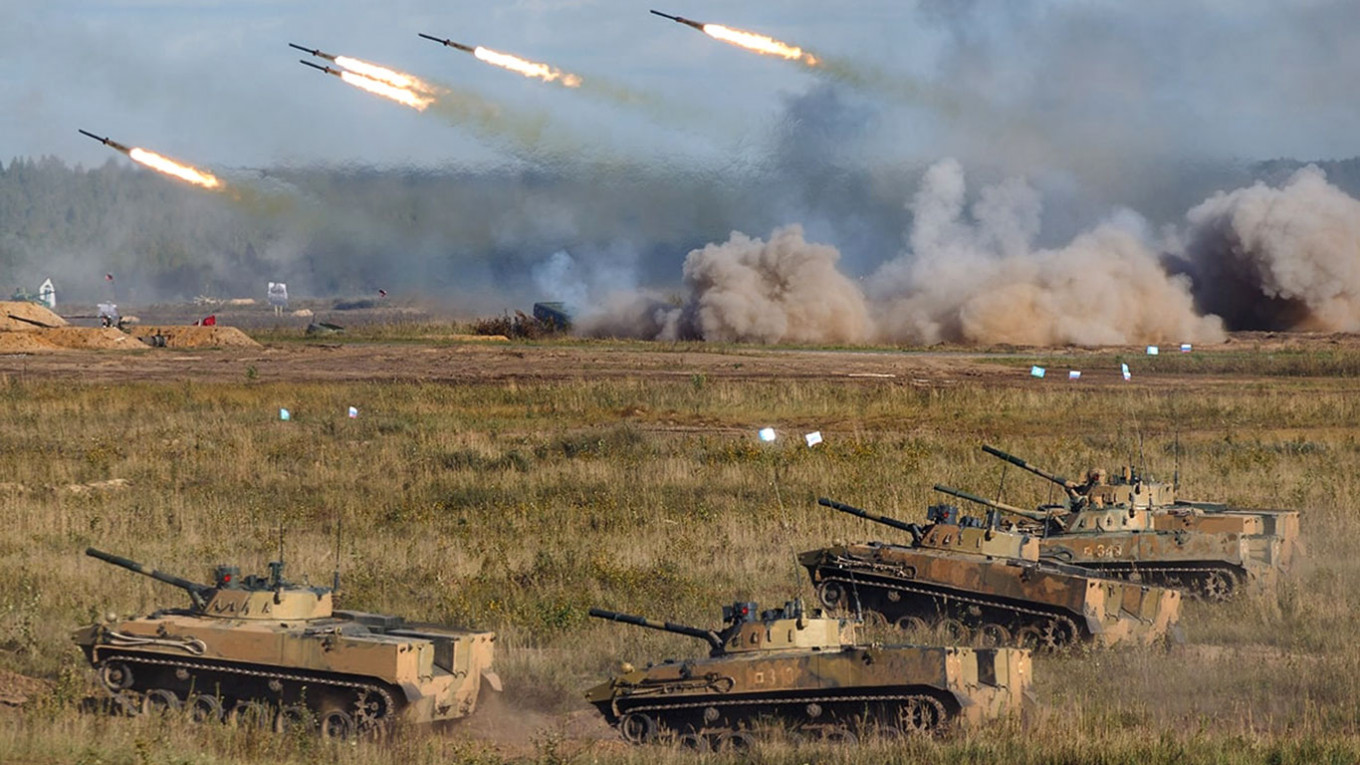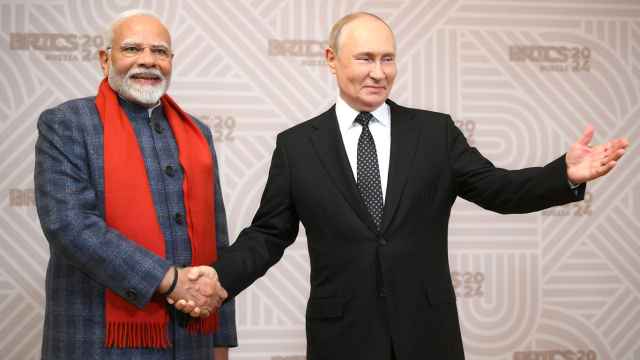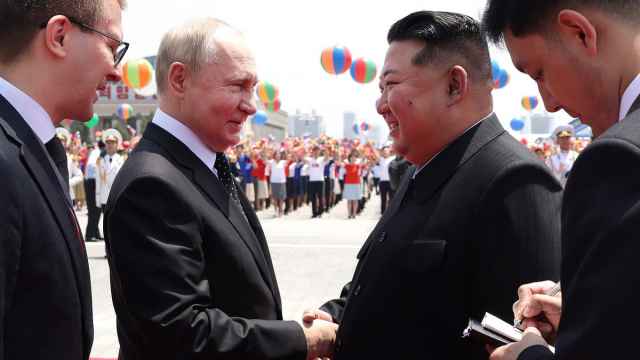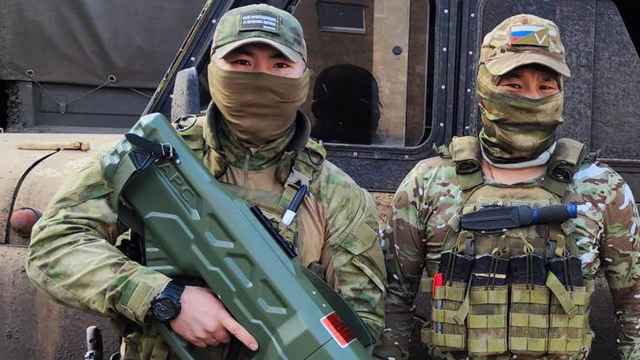On Sept. 16 Russia concluded its Joint Strategic Exercise, Zapad-2021, a large military training event focused on the Western Military District and Belarus.
Zapad is traditionally a command-staff exercise which takes place every four years, centered on what the Russian General Staff terms the Western strategic direction. Such exercises rotate between Russia’s Military Districts, Zapad, Vostok, Tsentr, and Kavkaz. They are not just training events, but serve important signaling functions as prominent display of military capabilities and the willingness to employ it.
There is also a growing military diplomacy component to the exercises, with foreign forces participating in joint training events as part of a coalition.
Given the ongoing confrontation between Russia and NATO, intensifying military activity on the part of both sides in Europe, and enduring apprehensions among bordering NATO member states, this exercise in particular draws considerable attention. Zapad-2017 proved the subject of sensational media coverage, although nothing particularly nefarious took pace, and the exercise itself was quite smaller than Zapad-2013 or the earlier 2009 iteration. In 2021, this exercise returned to much larger scale and duration.
What’s different in 2021 when compared to 2017?
Zapad-2021 featured largely the same scenario, a coalition of NATO states intervening in Belarus to conduct regime change and wrest a part of the country away.
It is a meeting engagement between Russian forces in Belarus and a NATO coalition, which expands into a regional war, with strikes against Belarus and the Russian homeland.
This year troops deployed two months in advance of the exercise to their assigned training ranges, which made the entire affair even more scripted than before, as troops drilled in the events they were expected to execute in September.
The exercise itself was larger than 2017, with Russian forces deploying to Western regions of Belarus. Its scope was substantial, involving at least 15 training ranges in Russia, and 6 in Belarus, not including the activities of the Northern Fleet Joint Strategic Command.
Russian-Belarusian exercises were far more robust, practicing interoperability as part of a Regional Grouping of Forces, a joint operational-strategic formation that is activated during a time of military threat.
Prior to 2020, Belarus had always been hesitant to host large Russian formations, hoping to hedge relations between Moscow and Western nations. That act is clearly over, as Minsk has been in regime survival mode, more firmly ensconced in Russia’s economic and security sphere of influence than ever before.
The exercise was therefore much more of a joint Russian-Belarusian event, designed to demonstrate Russian capability and willingness to defend its interests in that country. The coalition force participants, while arguably token, now numbered seven countries, and perhaps 2000 troops. This is a significantly more visible multinational presence than in previous years.
The Russian military’s training regimen has evolved to a year-long set of exercises and events, maintaining relatively high levels of readiness. Fall may represent the peak, with larger exercises and qualification checks, but it is no longer the main training period for the Russian armed forces. Paradoxically, while Zapad featured a number of dynamic exercises, on the spectrum of training events it is by far the most scripted. Nonetheless, six days of action across two dozen training ranges offered plenty to look at.
So what were the Russian forces practicing at Zapad?
Zapad exercise scenarios play out the more operational and tactical level components of Russia’s military strategy, called active defense. These include repelling and parrying a massed NATO aerospace attack in the initial period of war, what the Russian military terms massed missile-aviation strike (MRAU).
These exercises feature Russia’s air defense, tactical aviation, and electronic warfare units all working in conjunction. Russia’s Aerospace Forces and ground based missile units conduct counterstrikes across the theater of military operations with long range precision guided weapons to disorganize opponent forces, striking command and control, and key supporting infrastructure.
The Russian airborne was on full display with numerous parachute and heliborne operations.
They continue to train in increasingly larger parachute assaults, with mechanized equipment, and even battalion level exercises conducted at night. Russian forces still lag Western counterparts in their ability to operate at night, but that gap is slowly narrowing. Large airborne operations convey the ability to use airborne units as a rapid reaction force, to conduct flanking raids, or to hold critical terrain until heavier ground force units arrive. Similarly, large air assault operations employing helicopters in transport and attack roles illustrate the increased tactical mobility of Russia’s airborne units and their utility as supporting or flanking formations.
The centerpiece of joint force exercises both in Russia and Belarus was maneuver defense.
A scenario whereby Russian ground forces, backed by tactical aviation, an attack helicopters, defend against a larger opposing force and then turn the tables into a counteroffensive. The thrust of this concept is lead formations engaging enemy forces, then retreating to prepared reserve lines to draw opponents into an envelopment. Then Russian forces leverage their advantage in artillery and mine warfare, concentrating artillery and rocket fire against enemy forces. Having successfully attrited the enemy force, Russian units then switch to a counteroffensive, with large combined arms assault.
Russian exercises offer useful insights about how the Russian General Staff envisions a potential regional or large-scale war with NATO.
The Russian military continues to be concerned about NATO’s tremendous advantage in airpower, and long-range precision strike capability, seeing it as a formidable force multiplier. The General Staff assumes it will be fielding the inferior force on the battlefield and will have to find ways to turn the tables, trading territory to preserve its forces. An emphasis on preserving the force is something particular to the modern Russian military.
This does not mean such exercises are defensive in nature — Russian concepts inherently feature offensive and defensive operations.
They require persistent engagement of opponents, such that the distinction between defensive and offensive is largely immaterial. The clearest shift in Russian thinking is away from strategic ground offensives and towards long-range strikes against critically important economic and military targets, seeking to degrade a state’s ability or will to sustain a conflict.
Zapad scenarios featured high concentrations of artillery fire.
The Russian military, while an increasingly capable joint force, is principally an artillery army with supporting motor rifle and tank maneuver formations. Russian ground forces use artillery to enable or deny maneuver, which means it forms the backbone of its army, and the Russian way of war places a heavy burden on logistics.
At Zapad the Russian military placed on display various remotely operated ground vehicles, which while not especially impressive, were part of a much larger focus on both fielding and countering various types of unmanned technologies.
While not a stress test, Zapad was an affirmation that years of procurement and defence modernization have made the Russian military a combat credible force, with increased readiness and mobility.
A Message from The Moscow Times:
Dear readers,
We are facing unprecedented challenges. Russia's Prosecutor General's Office has designated The Moscow Times as an "undesirable" organization, criminalizing our work and putting our staff at risk of prosecution. This follows our earlier unjust labeling as a "foreign agent."
These actions are direct attempts to silence independent journalism in Russia. The authorities claim our work "discredits the decisions of the Russian leadership." We see things differently: we strive to provide accurate, unbiased reporting on Russia.
We, the journalists of The Moscow Times, refuse to be silenced. But to continue our work, we need your help.
Your support, no matter how small, makes a world of difference. If you can, please support us monthly starting from just $2. It's quick to set up, and every contribution makes a significant impact.
By supporting The Moscow Times, you're defending open, independent journalism in the face of repression. Thank you for standing with us.
Remind me later.








